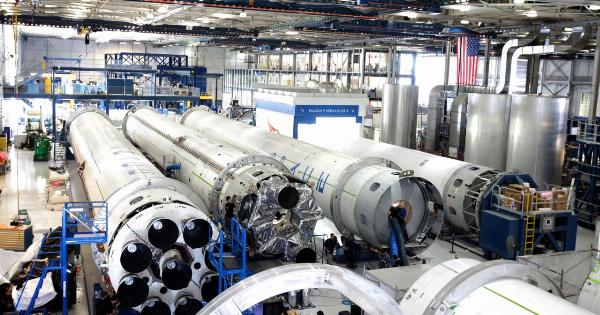As the primary source of energy for vehicles and machinery, petrol engines have undoubtedly contributed to the advancement of human civilization.
However, the widespread use of such engines has also resulted in a range of environmental issues, including air pollution. The emissions released by petrol engines pose a significant threat to our respiratory system and overall health.
In this article, we will delve into the adverse effects of these engines on our breathing and explore potential solutions for a cleaner future.
The Composition of Petrol Engine Emissions
Petrol engine emissions consist of various pollutants, including nitrogen oxides (NOx), particulate matter (PM), carbon monoxide (CO), and volatile organic compounds (VOCs).
NOx, a collective term for nitrogen oxide (NO) and nitrogen dioxide (NO2), is a major contributor to air pollution.
These gases, emitted primarily through the combustion process of petrol engines, can cause various respiratory problems such as bronchitis and asthma. NO2, in particular, irritates the respiratory tract and can significantly worsen pre-existing respiratory conditions. Additionally, NOx emissions also contribute to the formation of smog and acid rain.
Particulate matter, also known as PM, refers to tiny particles present in the exhaust emissions of petrol engines. These particles can penetrate deep into our respiratory system, reaching the alveoli in our lungs.
PM2.5 and PM10 are the most concerning fractions, as their small size enables them to bypass our body’s natural defense mechanisms. Prolonged exposure to PM can lead to respiratory infections, decreased lung function, and even lung cancer.
Carbon monoxide (CO) is a colorless and odorless gas produced when petrol is not completely burned. Inhaled CO enters our bloodstream, reducing its ability to carry oxygen to vital organs.
Even at low levels of exposure, CO can cause headaches, dizziness, and nausea. Prolonged exposure to high levels of CO can lead to severe heart and respiratory problems.
Volatile organic compounds (VOCs) are emitted during the evaporation of petrol and its incomplete combustion process. These compounds, often toxic and carcinogenic, can irritate the respiratory system and cause long-term health complications.
The Adverse Health Effects
The continuous exposure to petrol engine emissions can have severe implications for our respiratory system and overall well-being. Here are some of the notable health effects:.
Asthma and Other Respiratory Conditions
For individuals with asthma, petrol engine emissions can trigger or worsen symptoms such as wheezing, coughing, and shortness of breath.
The irritants present in these emissions can exacerbate chronic respiratory conditions and contribute to increased hospital admissions and emergency room visits.
Increased Risk of Lung Cancer
According to the International Agency for Research on Cancer (IARC), diesel engine exhaust is a known carcinogen. Petrol engines emit similar toxic substances, including benzene, a well-established human carcinogen.
Prolonged exposure to these pollutants increases the risk of developing lung cancer, one of the deadliest forms of cancer worldwide.
Developmental Issues in Children
Children, whose lungs are still developing, are particularly vulnerable to petrol engine emissions. Prolonged exposure can hinder their lung development, leading to long-term respiratory ailments and decreased lung function.
Studies have also linked exposure to these emissions during pregnancy with adverse effects on fetal development and birth outcomes.
Allergic Reactions and Irritation
Individuals with allergies or sensitivities to pollutants may experience increased symptoms when exposed to petrol engine emissions.
Irritation of the nose, throat, and eyes, along with persistent coughing, are common allergic reactions resulting from such exposure.
Cardiovascular Complications
Petrol engine emissions do not only impact our respiratory system but also pose significant risks to our cardiovascular health.
The fine particles in these emissions can enter our bloodstream, leading to inflammation, increased blood pressure, and an elevated risk of heart attacks, strokes, and other cardiovascular conditions.
Protecting Our Respiratory Health with Cleaner Alternatives
To minimize the impact of petrol engine emissions on our respiratory system, it is crucial to adopt cleaner alternatives for transportation and power generation. Here are some options:.
Electric Vehicles (EVs)
Electric vehicles produce zero tailpipe emissions, making them an environmentally friendly alternative to petrol-powered cars.
By transitioning to EVs, we can significantly reduce the air pollution associated with the transportation sector and improve air quality, ultimately benefiting our respiratory health.
Hybrid Vehicles
Hybrid vehicles combine an electric motor with a petrol engine, resulting in lower emissions compared to traditional petrol vehicles. Although they still produce some pollutants, their overall environmental impact is significantly reduced.
Hybrid vehicles serve as a practical transitional solution while the infrastructure for electric vehicles continues to evolve.
Public Transportation and Cycling
Encouraging the use of public transportation, such as buses and trains, can substantially reduce the number of individual petrol engine-emitting vehicles on the road.
Additionally, promoting cycling and walking as alternative modes of transportation not only alleviates air pollution but also promotes physical fitness, benefiting our respiratory and cardiovascular health.
Transition to Renewable Energy Sources
Reducing our dependence on fossil fuels and transitioning to renewable energy sources is crucial for combating air pollution.
By generating electricity from renewable sources such as solar, wind, and hydro, we can power transportation and various industries without harmful emissions from petrol engines.
Improved Engine Efficiency and Regulations
Advances in engine design have the potential to significantly reduce emissions from petrol engines. Improving engine efficiency and implementing stricter emissions standards can help mitigate the impact of these engines on our respiratory health.
Governments and regulatory bodies play a vital role in enforcing and encouraging the adoption of cleaner technologies.
Conclusion
Petrol engine emissions pose a severe threat to our respiratory system and overall well-being.
The pollutants released during their operation contribute to various respiratory conditions, increase the risk of lung cancer, and have detrimental effects on children’s development. It is imperative that we transition to cleaner alternatives, such as electric vehicles, hybrid vehicles, and public transportation, to minimize the harmful impact of these engines on our health.
By embracing renewable energy sources and advocating for improved engine efficiency, we can create a future where the air we breathe is healthier and safer for generations to come.






























